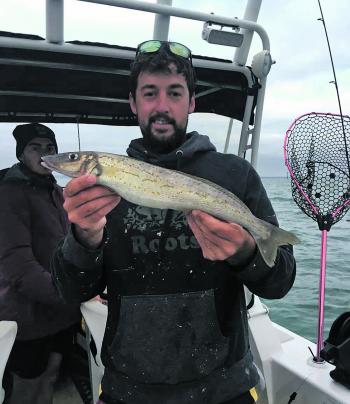Despite the pre-Christmas weather not playing its part, the fish being caught when conditions allowed were excellent in quality and number – the best we have seen over the last 10 years. Everybody had fingers-crossed that the fishing would continue once the weather improved through the summer and it did, at least for the first few weeks of January.
Sadly, the brakes were slammed and the reports slowed dramatically. Except for the larger snapper, the fish hadn’t gone anywhere, just off the bite, so the conventional was thrown out the window and anglers started trying new ideas and areas. To their surprise, they started catching fish again.
Typical of this time of the year, there are several different species of fish at the cutting tables – another positive of autumn fishing in this area. I have customers telling me they are catching seven or eight species of fish in a session with at least four or five to take home for the table.
Settled conditions have allowed boats to head offshore and there are fish everywhere. Flathead make up most of the numbers and the average size this year is excellent. A good mixture of yank and tiger flathead are being caught.
The best of the catches are coming from a similar depth of 35-45m of water. The area varies a lot and reports are coming in all the way from the western entrance to the windmills. Baits don’t change much, with squid and pilchard accounting for the majority. Just take plenty of ice – if you find them, a full esky is possible.
In the same areas as the flathead are very large schools of couta, salmon, bait-sized mackerel, squid (both arrow and calamari), which sometimes make it difficult to get down to the flathead. These species of fish generally mean bigger fish and this year it’s proving true with some of the best shark numbers for many years.
I needed to go back five years to get similar reports of mako numbers. If the food stays around, there is nothing to suggest anything will change over the next month. Mako, blue and whaler sharks are all in the same areas as the baitfish, whereas the gummy reports are coming from 25m of water around the Powlett River.
Back in the bay, whiting have been consistent in size, while the quantity has varied greatly with no real pattern to time of day or area. It has been a bit confusing lately and you need to be prepared to move around a bit to find the fish. If you do, it’s not unusual to come home with a dozen or so over 40cm.
Generally, very early morning before the sun is up in the shallower whiting spots, below the bridge in Cleeland Bight and around Dickies Bay have been the best. Once the sun gets up, you need to move to deeper water towards the channels. Tortoise Head and Ventnor have been better in the afternoons into the evening, especially on the later tides with the kayak anglers doing the best at Ventnor. Just when you think you have it worked out, somebody catches a bagful where and when you wouldn’t expect them to.
I have had a couple of reports of elephant fish and would expect these to fire up shortly for about a month or so. Around the corals or ‘elephant triangle’ is where you will find a great number of them. You will also have a chance of catching them in most parts of the bay. Pinkies will start to run out and the gummies and calamari will pick up as we change from the autumn to winter season. That doesn’t mean the end of fishing, just an extra few layers of clothes.
Reads: 1847
Mitch with a whiting of the typical good quality caught this season.

Brenton managed his first mako recently and it was a perfect size for a starter.




